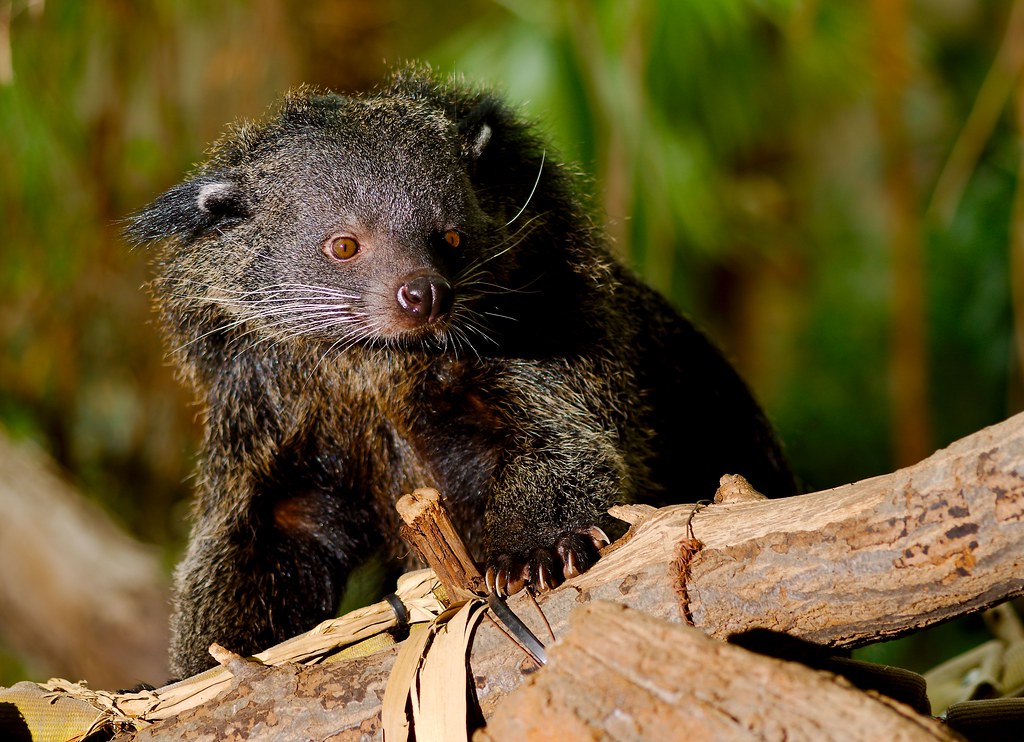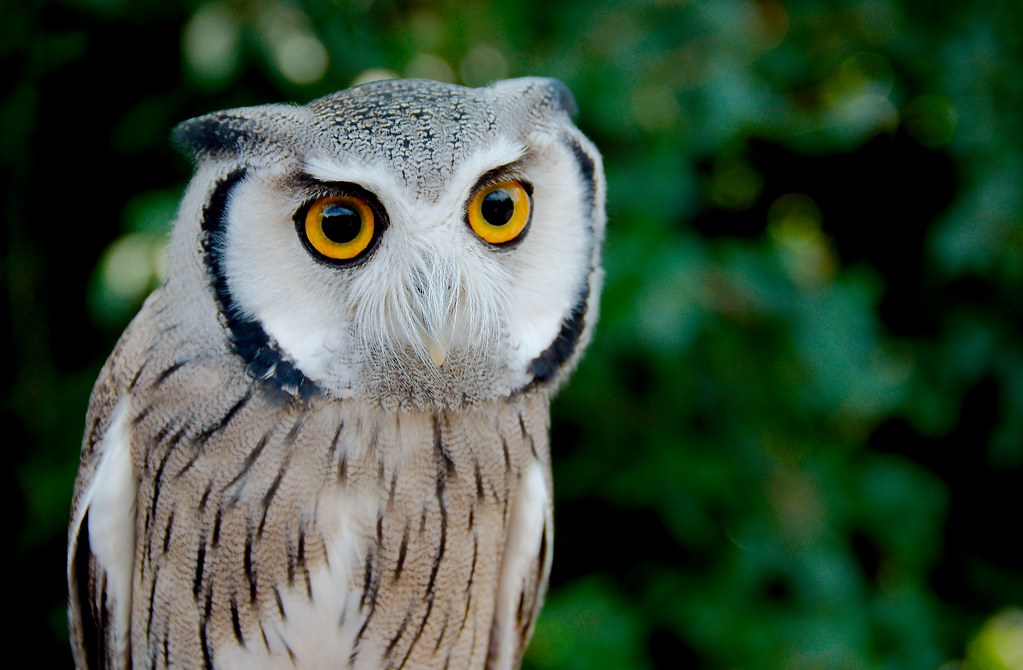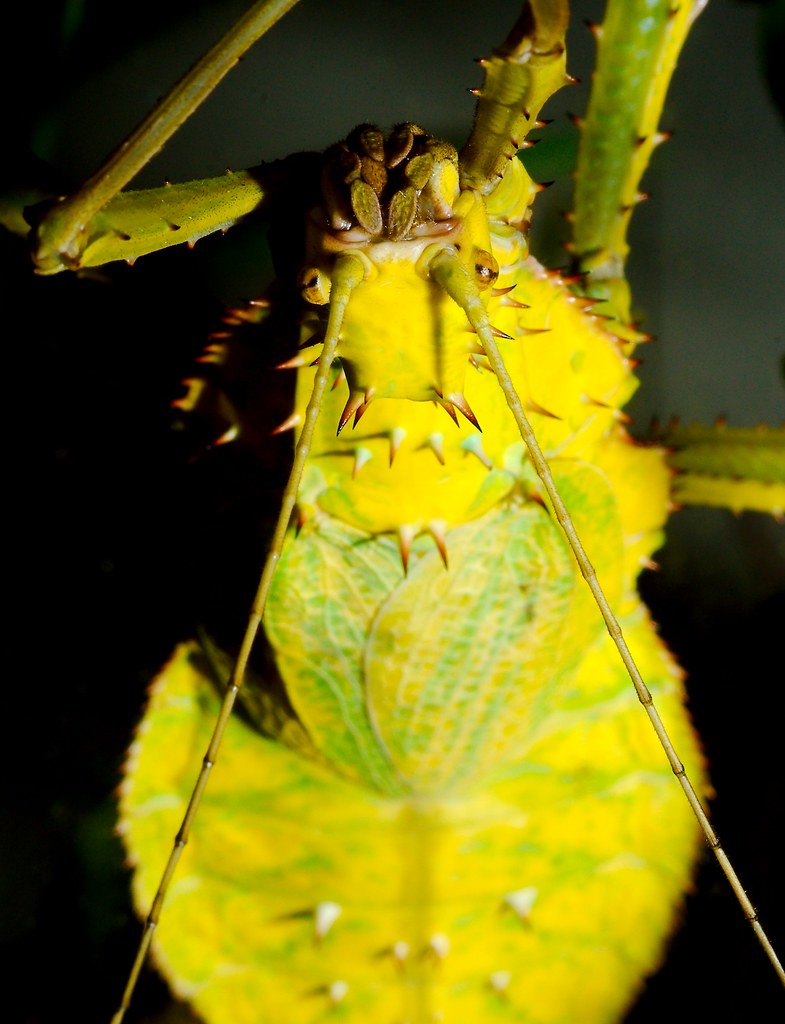
You’ve got to crawl before you can walk, no matter your species*.
* Well, unless you’re a bird, I guess.
Dicrocoelium dendriticum is a parasite that lays eggs to infect snails. Once a snail becomes infected, it protects itself by forming cysts and expelling them. This is good for the snail and for the parasite because these cysts are the yummiest things an ant has ever tasted. Once the ant eats a cyst and gets infected, the parasite gets into the ant’s brain. The ant brain takeover forces the ant to climb tall blades of grass and hang out all night. When day comes, this hold is released, so the parasite doesn’t bake in the sun along with the ant. Eventually, the grass is eaten and the parasite infects a large animal which then expels the parasite’s eggs in its dung … which are eaten by snails.
The Jade Headed Buffalo Beetle, of course, knows nothing about this and just really really likes its blade of grass.

According to Wikipedia, binturongs plantains, figs, eggs, rodents, and fowl’s heads … which seems rather specific to me.

This owl is not on exhibit. It is being kept behind the scenes for breeding purposes. So I was very lucky to see it when it was being brought out for a bit of fresh air.
Zoos do this a lot. Since they’ve become more of conservation centers and less of entertainment complexes, there is a lot that the public doesn’t get to see. This is problematic, because most people can’t support what they don’t know about. And, without that support, it is hard to continue doing the work.
This is a problem that most zoos have yet to solve.

The Japanese snow gator is an ambush predator that occupies the hot springs of the islands. The geothermic-heated temperature allow the alligators to thrive at an altitude that would normally get too cold. Lacking defenses against attack, prey species have learned to be extremely wary when visiting watering holes.
She returns to the spot where it happened. It’s not everyday. Sometimes weeks will go by with nary a thought to that day. But eventually, she returns.
She remembers her joy that day, the opportunity. It was glorious. Finally, her day in the light. She was noticed. She was with new friends, building a new life. She was elated when she returned, anxious to share her news with him.
But he was gone. He was gone and she hadn’t been there. Would it have happened if she had said no? If she had kept the date? If it had, could she have saved him? Would they have died together? Would they have lived, returning together to this point to share a different memory entirely?
Maybe. Maybe not. But she would know.
Not knowing is truly the worst.

Back in the day, zoos were mostly bars and fences (a lot of older zoos still have a lot of fences). Eventually, zoos realized that humans felt better about looking at the animals if there weren’t bars in the way and they started digging pits. Interestingly, this works for real life humans and is the exact opposite for photography. With photography, you want the animal slightly above you, so you feel a sense of connection, even through bars. If the animal is below you, it reinforces the common “humans are better than animals” view, and creates distance. The greater the height, the more the distance and the photos just don’t resonate as much.
That is, unless the animal is interacts directly with the viewer. Then the image can still work.

Suppose you’re in insect. Your eggs need to be kept under 25 C to hatch, but you don’t want to bother with actually moving them out of the sun or finding a good home for them. What do you?
If you’re a giant spiny lead insect, you’ll coat your eggs in lipids and fling them all over the forest to ants to eat. They’ll find the eggs, carry them to their nest, eat the outer layer and then ditch them in their trash pile … which is kept under 25 C. Then your babies will hatch out, think “WFT? Where am I?”, find their way out and scamper up the nearest tree.
You may not think she’s the greatest mother, but as you can see, she’s punk and doesn’t care about your opinion.

Taking photos through an aquarium is difficult. The lens must be directly parallel on the “glass” to prevent “fringing”, or the rainbow effect you get from different frequencies of light refracting at different angles. Additionally, there is spillover from the flashes themselves. On old plastic (as seen here), every scratch or imperfection glows. You can get around this with little things by placing the lens and/or flashes directly against the glass and shooting such that no light spills onto the surface you’re surfing through. This is harder with bigger animals like this fish. Here, I had to set the flashes to a fairly tight field of view and hope the fish didn’t move too much as I set up and took the shot. As you can see, it could have worked better. It also helps to clean the glass. The older it is, though, the less well that works. What I need to do it better is some sort of angled “snoot” that allows for better light blocking. I have started some experiments with ThinkingPutty to make some of my own in the field. They’re working well, but as you can see, I need more practice.